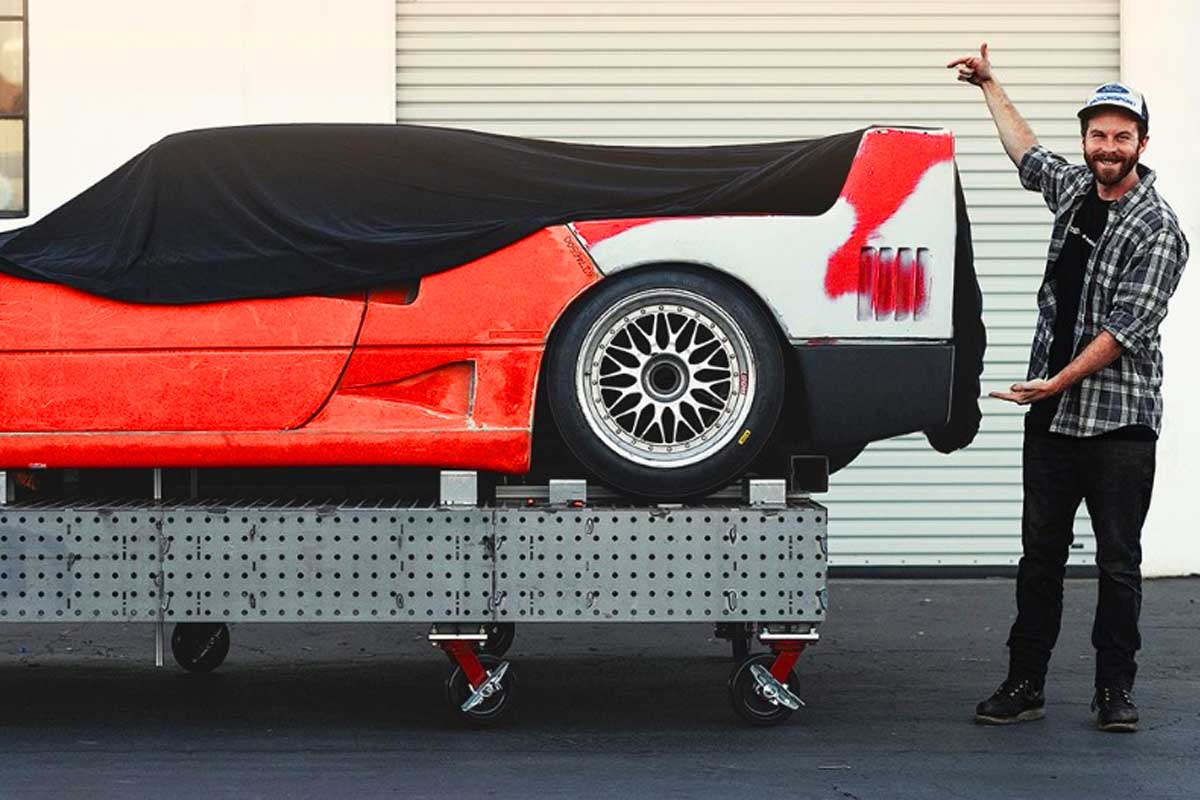
Stanceworks is world-renowned for its high-quality creations and preparations, such as the Ferrari 244Ka modernized 308 powered by a Honda block, designed to take part in the Time Attack, which we wrote about very recently. The latest project, to which Mike Burroughs is now devoting all his time, is even more striking: create the ultimate Ferrari F40, the F40 EVO.
The Ferrari F40 made its debut in 1987 and immediately gained iconic status. The last prancing-horse supercar born in Enzo Ferrari's lifetime, its distinctive '80s looks and raw, visceral performance marked an entire generation, and it continues to fascinate. Its 2.9-liter twin-turbo V8 engine, equipped with the latest technology for its time, developed 478 hp and 577 Nm of torque. The transmission, a five-speed manual, enabled the F40 to reach speeds of over 320 km/h.
Authentic pieces, with home-made frames
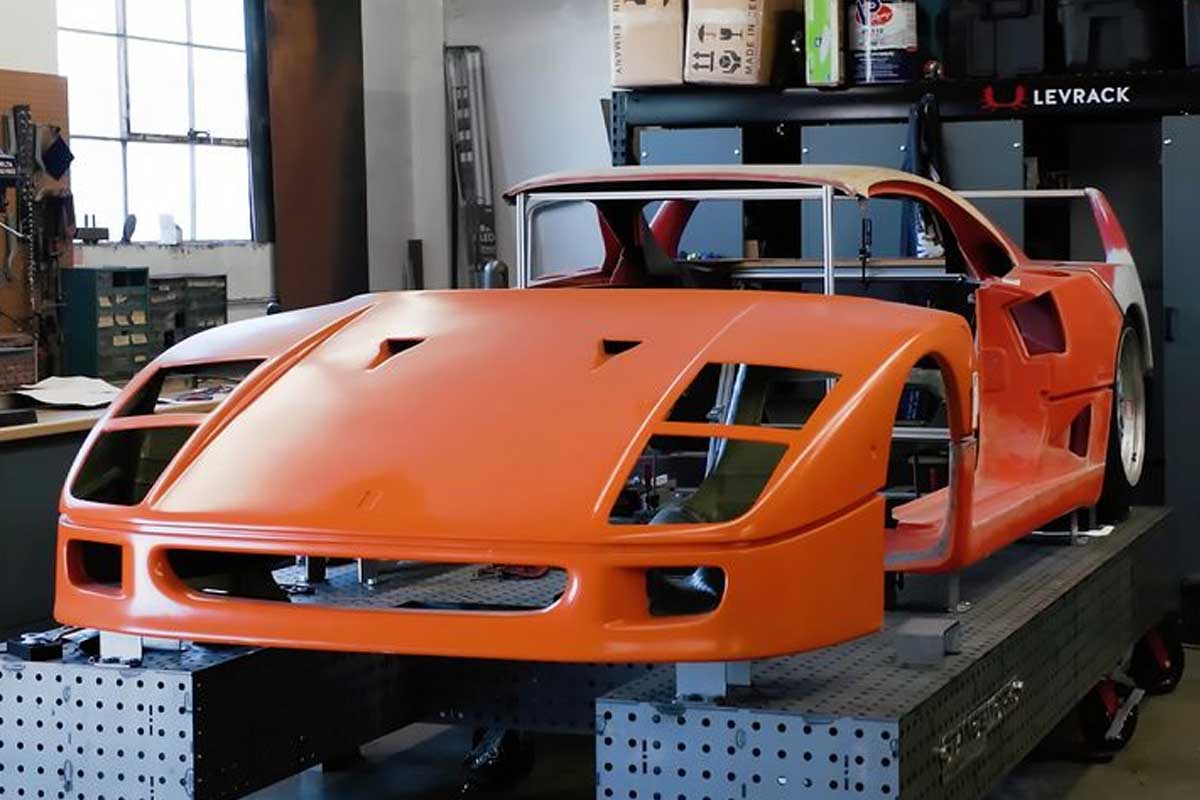
Returning to the Stanceworks project, it all began in March 2024, when Burroughs acquired a complete F40 body. The first delivery included not only the front end, but also the doors, roof, rocker panels and rear fenders, all genuine stock parts imported from Europe. A second delivery provided the underpinnings and the entire rear section. Burroughs then began fabrication of a custom tubular chassis, designed to be lighter and stronger than the F40's original structure, thanks to advances in materials. A body faithful to the supercar's design by the late Nicola Materrazzi will be grafted onto this structure.
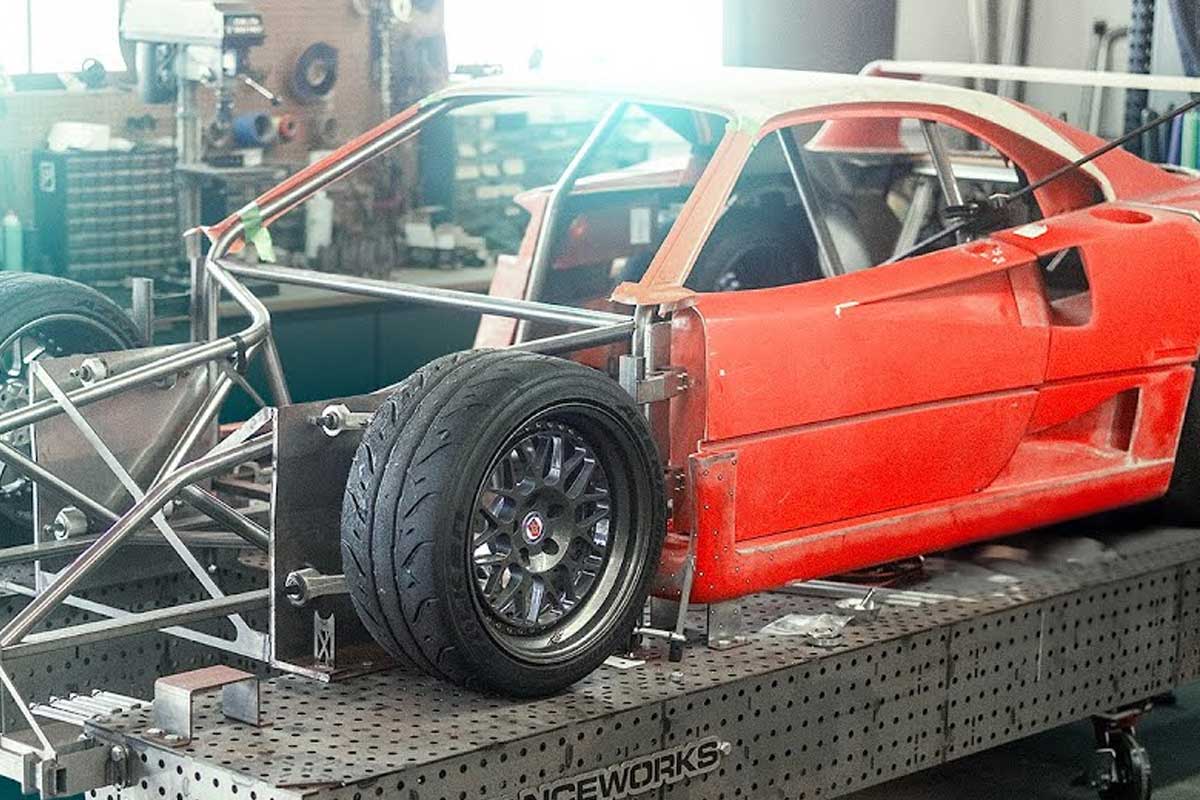
The F40 EVO brings together the best of the 80s, the iconic lines and crazy aura of the F40, with more recent Ferrari technologies. The running gear is modified with Centerlock suspension and hubs taken from the Ferrari 458 Challenge EVO, not to mention the installation of pneumatic cylinders! Adapting the body kit to the chassis is one of the most arduous tasks of this incredible project, still unfinished at the time of writing. The great thing about Stanceworks projects is that you can follow the progress of the work in great detail, thanks to the videos they regularly post on Youtube. You can admire the machining, 3D printing and CAD design of certain parts, demonstrating the high level of professionalism involved. In particular, we can see the reception and unpacking of an original F40 body panel, known as the "rain tray", an authentic carbon-kevlar part.
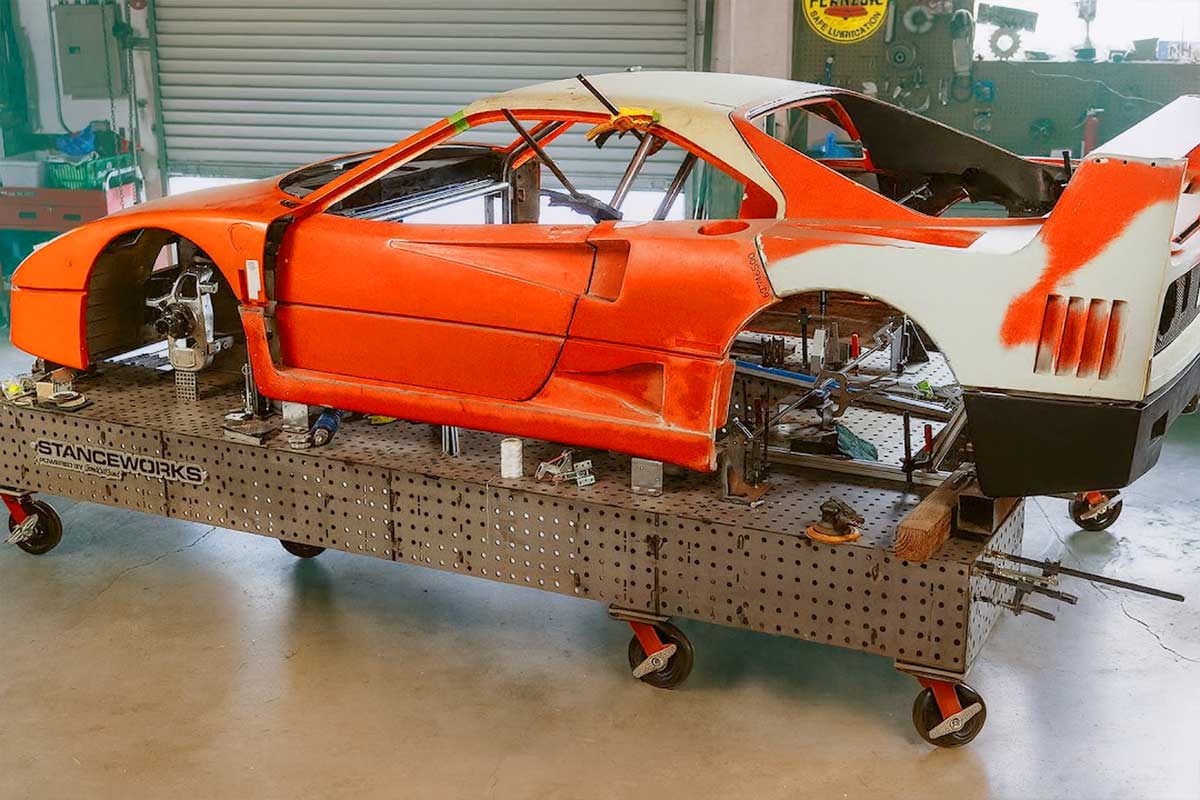
An 800 hp Ferrari V12, at least!
It's on the mechanical side that Stanceworks wants to revolutionize the F40. Ferrarists who were horrified by the Honda-powered 308 should be reassured at once. This time, the soul of this supercar remains Italian. But the F40 EVO abandons the V8 of the original.
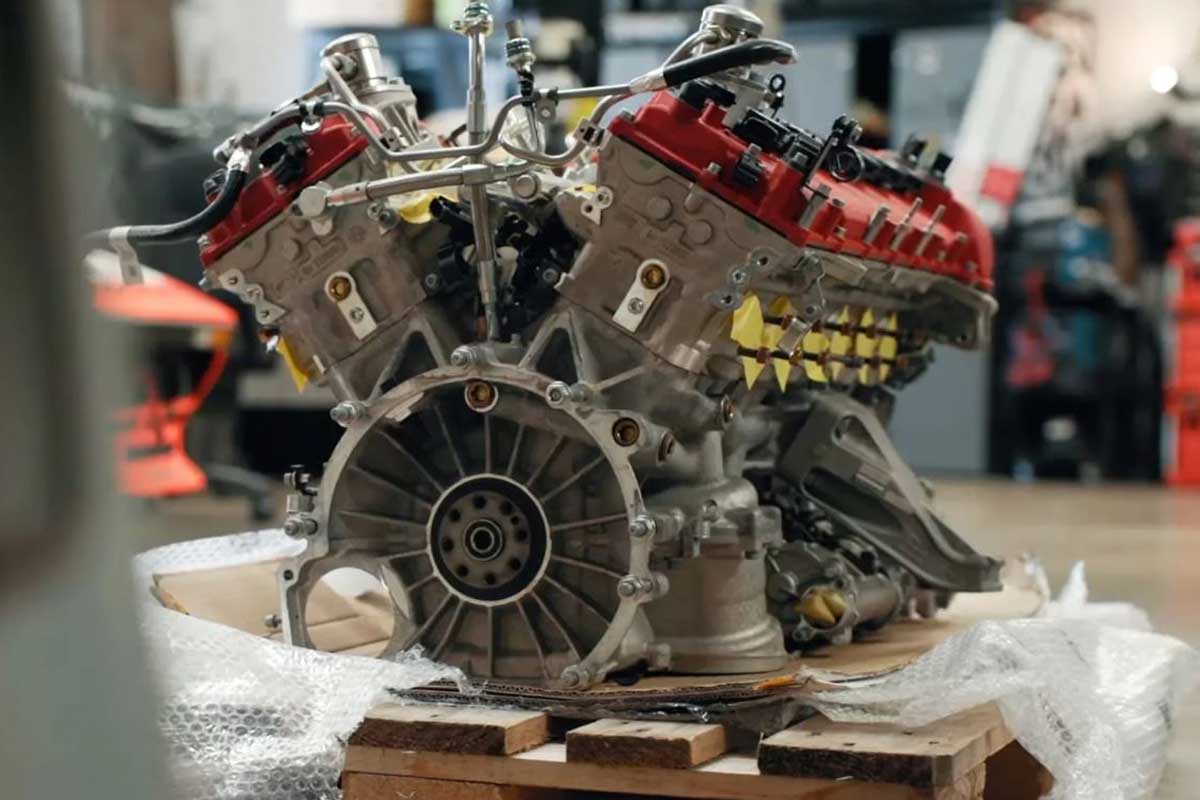
The engine is now powered by an F-140GA V12, taken from a wrecked Ferrari 812 Superfast with only a few hundred kilometers on the odometer, and delivering 800 hp at 9,000 rpm. Stanceworks will stop at nothing, as they intend to do away with the original direct injection system, which they claim serves no other purpose than to optimize fuel consumption and emissions. An assertion that is undoubtedly debatable. In other words, two factors that don't carry much weight with them! A Motec competition-type system should supervise intake management. Finally, for the transmission, Stanceworks is also turning to competition, with a Holinger sequential 6-speed gearbox found on racing cars.
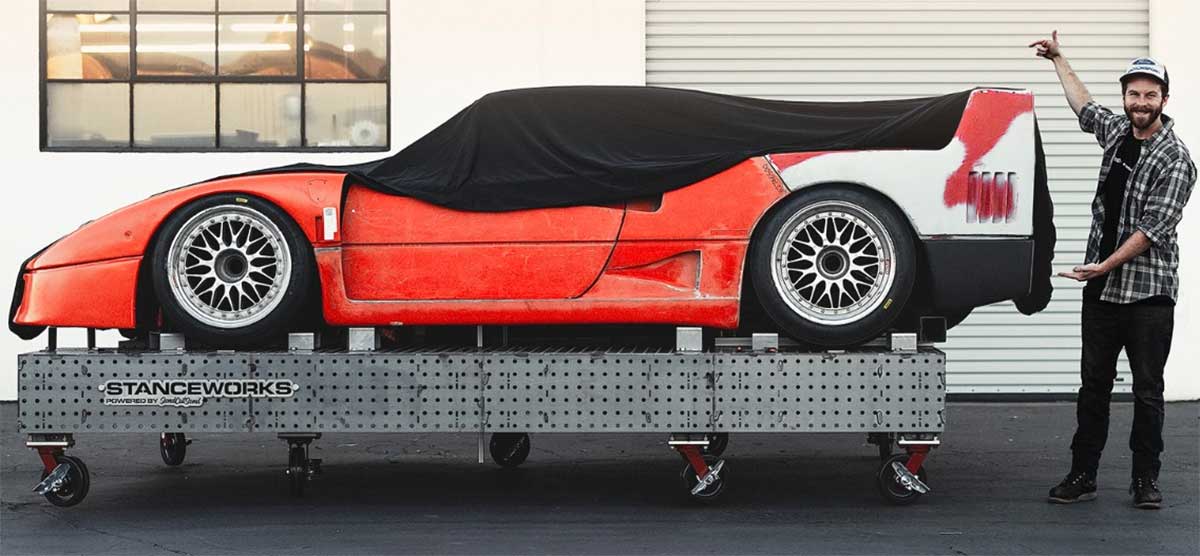
Assembly is currently being finalized, and we should soon be able to witness the awakening of the beast, once the modified V12 has been grafted onto the chassis. See you soon for the rest of this crazy Stanceworks adventure!

Between recreation and restomod.
Nothing to do with the original.
Now it will remain a unique exercise, only as valuable as its creator is willing to make it.
As for direct injection, I agree with Alexandre that it brings not only an advantage in terms of emissions and fuel consumption, but also, and above all, greater engine efficiency by optimizing fuel metering for better combustion (and, by the same token, better performance at equivalent flow rates).